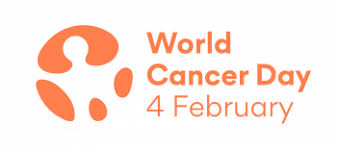Written by Yung S. Lie, PhD, President and Chief Executive Officer, Damon Runyon Cancer Research Foundation
 In the past decade, the oncologist’s toolkit has expanded beyond chemotherapy, radiation and surgery to include precision drugs that target specific cancers and immunotherapies that activate the immune system to attack a patient’s cancer. Today, as we mark World Cancer Day, we reflect on how far we’ve come in the last decade and what lies ahead for cancer research. This is the decade to double down on our investment in research, not only to capitalize on recent progress but to focus on the next-generation breakthroughs that will save more lives.
In the past decade, the oncologist’s toolkit has expanded beyond chemotherapy, radiation and surgery to include precision drugs that target specific cancers and immunotherapies that activate the immune system to attack a patient’s cancer. Today, as we mark World Cancer Day, we reflect on how far we’ve come in the last decade and what lies ahead for cancer research. This is the decade to double down on our investment in research, not only to capitalize on recent progress but to focus on the next-generation breakthroughs that will save more lives.
Since 2010, a wave of new immunotherapies has transformed treatment for cancers including melanoma, lymphoma, leukemia and lung cancer. “Checkpoint inhibitor” drugs work to uncloak cancer cells to the immune system, helping it to mount a powerful response. Another new technology, CAR T-cell therapy, collects a patient’s T cells from the blood, modifies them and reinfuses the supercharged immune cells into the body to hunt down and destroy tumor cells. It is our profound hope that in the next decade, not only will researchers discover more treatments like these, but immunotherapy research may even lead to cancer vaccines that train the body’s immune system to identify a cancer cell and leap into action.
Patients entering cancer treatment this year find themselves with personalized treatment options that did not even exist in 2010. Advances in tumor sequencing and genotyping allow doctors to identify the most effective treatment options for certain cancers while minimizing side effects. At the same time, researchers are exploring the role of “on/off switches” inside cells that play a part in cancer onset and how these mechanisms might be controlled to stop or prevent cancer growth. At the same time, researchers are exploring the role of epigenetic “on/off switches” inside cells that play a part in cancer onset and how these mechanisms might be controlled to stop or prevent cancer growth. Research advances now allow scientists to transform stem cells into tiny 3-dimensional versions of internal organs to test potential drugs on more accurate cancer models in the laboratory, speeding the development of new therapies.
Many of these advancements, which have extended survival and improved the quality of life for thousands of patients, weren’t on our radar just a decade ago. It stands to reason that the most important cancer breakthroughs of the coming decade may come from areas of inquiry still in their earliest stages today. One such area is likely to be the intersection of computational science and cancer biology. The volume and diversity of data available to cancer researchers has grown exponentially in the past 10 years. Since its launch, the Cancer Genome Atlas has sequenced 33 different tumor types from 11,000 patients. Researchers now have access to full genome sequences, catalogs of all the proteins in a single cell, and large databases of pathology and imaging data from patients.
Increasingly, biologists are realizing that new cancer discoveries may be hiding in these vast amounts of biological data. Taking the first steps into this uncharted territory will require a blend of diverse skills and expertise. The Damon Runyon Quantitative Biology Fellowship Award is one of the first programs to encourage quantitative scientists to lead this new generation of cancer researchers by using data science and computational tools to answer complex questions in cancer biology toward the goal of yielding innovation in cancer risk assessment, diagnosis, prevention and treatment.
A disease as complex as cancer requires investment in brave and bold new ideas, sometimes even before many believe they have the possibility of patient impact. It is vitally important that organizations like our own not only continue to fund researchers building on discoveries in existing fields, but also recognize the fields that will be critical to cancer research in the future. Taking risks on promising new ideas brought us new, better cancer tools in the past decade, and it’s the same approach that will bring us the as-yet-unknown breakthroughs of the next decade.







